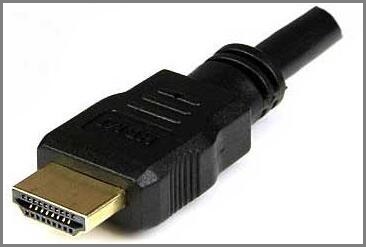If you are not sure whether to connect the monitor to your PC using DisplayPort or HDMI, then you should read this post carefully. In this post, MiniTool will give you some information about DisplayPort vs HDMI, then you can know which one to choose.
Before you buy a monitor for your computer, you should check the back of your computer to know which ports it supports because different ports have different capabilities and compatibilities.
If you plan to connect a new monitor to your gaming computer, then you can notice that there are two ports that you can use – DisplayPort and HDMI. But which one is more suitable? Now let’s get some things about DisplayPort vs HDMI.
Connecting with DisplayPort
Speaking of HDMI vs DisplayPort, DisplayPort looks similar to HDMI but is more common on PCs than TVs. It can play high-definition video and audio in many cases, but its standards are different. On modern monitors, you may find any of the following:
- DisplayPort 1.2: supports up to 4K at 60Hz, and some 1.2a ports may also support AMD’s FreeSync
- DisplayPort 1.3: supports up to 4K at 120Hz or 8K at 30Hz
- DisplayPort 1.4: supports up to 8K at 60Hz and HDR

First of all, DisplayPort supports AMD’s FreeSync and Nvidia’s G-Sync, so no matter which brand of card you use, you can enjoy a tearless gaming experience (of course, as long as your monitor supports the technology).
What’s more, you can drive multiple displays through one DisplayPort connection without having to use multiple ports, which is convenient. Laptops can even send DisplayPort signals through the USB-C port.
Related post: Top 5 USB C Monitors for Your Choose [2020 Update]
Connecting with HDMI
When talking about DisplayPort vs HDMI, HDMI is most commonly used on TVs, which can also send high-definition video and audio signals through a single cable, thus achieving a simple and clean setup. There are multiple versions of HDMI, and each version has been improved in the last aspect. On modern monitors, you will find any combination of the following ports:
- HDMI 1.4: supports up to 4K (4,096 x 2,160) at 24Hz, 4K (3,840 x 2,160) at 30Hz, or 1080p at 120Hz
- HDMI 2.0: supports up to 4K at 60Hz, and later versions (HDMI 2.0a and 2.0b) included support for HDR
- HDMI 2.1: Supports up to 10K resolution at 120Hz, and improved HDR with dynamic metadata and enhanced Audio Return Channel (eARC), which allows Dolby Atmos and DTS:X audio to be sent from the display to the receiver.

Related post: VGA VS HDMI: What’s the Difference Between Them?
Except for the things mentioned above, all modern HDMI ports should support AMD’s FreeSync technology, which can eliminate screen tearing in games by matching the monitor’s refresh rate to the video card’s output frame rate (newer HDMI versions support FreeSync at a higher refresh rate). However, HDMI does not support Nvidia’s similar G-Sync technology, for which you need DisplayPort.
Is DisplayPort better than HDMI? If your display only allows you to choose between HDMI 2.0 and DisplayPort 1.2, HDMI may be a better choice because HDMI 2.0 supports HDR and DisplayPort 1.2 does not.
Bottom Line
This post is talking about DisplayPort vs HDMI. After reading this post, you should know which port is more suitable for you. If you have any other ideas, leave a comment below and we’ll reply to you as soon.